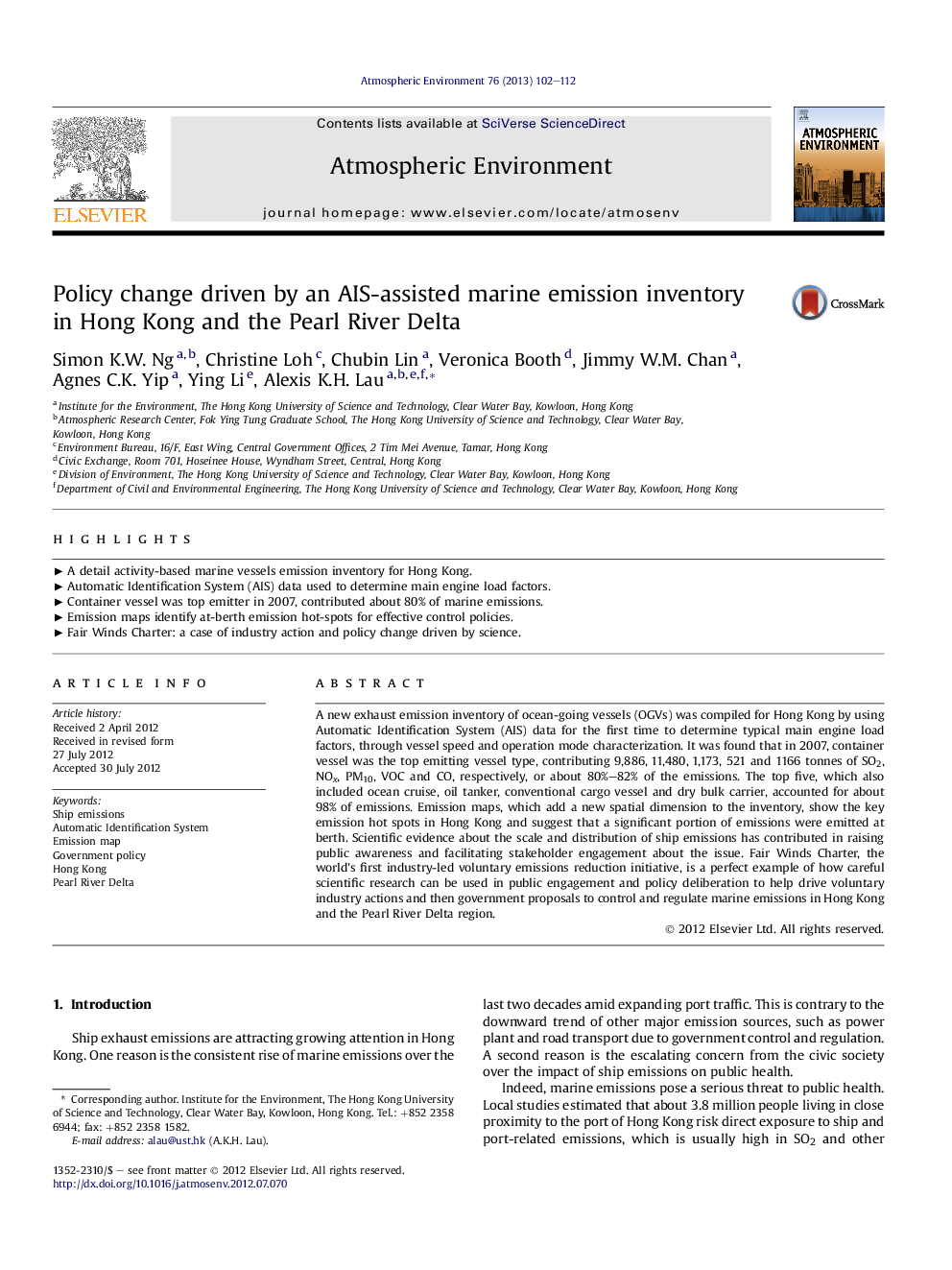| Article ID | Journal | Published Year | Pages | File Type |
|---|---|---|---|---|
| 4438256 | Atmospheric Environment | 2013 | 11 Pages |
A new exhaust emission inventory of ocean-going vessels (OGVs) was compiled for Hong Kong by using Automatic Identification System (AIS) data for the first time to determine typical main engine load factors, through vessel speed and operation mode characterization. It was found that in 2007, container vessel was the top emitting vessel type, contributing 9,886, 11,480, 1,173, 521 and 1166 tonnes of SO2, NOx, PM10, VOC and CO, respectively, or about 80%–82% of the emissions. The top five, which also included ocean cruise, oil tanker, conventional cargo vessel and dry bulk carrier, accounted for about 98% of emissions. Emission maps, which add a new spatial dimension to the inventory, show the key emission hot spots in Hong Kong and suggest that a significant portion of emissions were emitted at berth. Scientific evidence about the scale and distribution of ship emissions has contributed in raising public awareness and facilitating stakeholder engagement about the issue. Fair Winds Charter, the world's first industry-led voluntary emissions reduction initiative, is a perfect example of how careful scientific research can be used in public engagement and policy deliberation to help drive voluntary industry actions and then government proposals to control and regulate marine emissions in Hong Kong and the Pearl River Delta region.
► A detail activity-based marine vessels emission inventory for Hong Kong. ► Automatic Identification System (AIS) data used to determine main engine load factors. ► Container vessel was top emitter in 2007, contributed about 80% of marine emissions. ► Emission maps identify at-berth emission hot-spots for effective control policies. ► Fair Winds Charter: a case of industry action and policy change driven by science.
